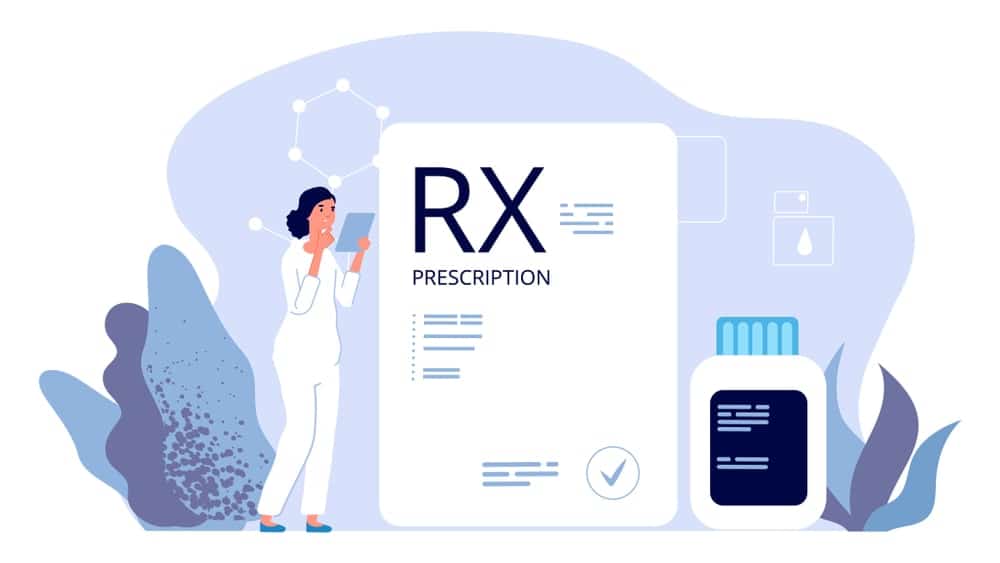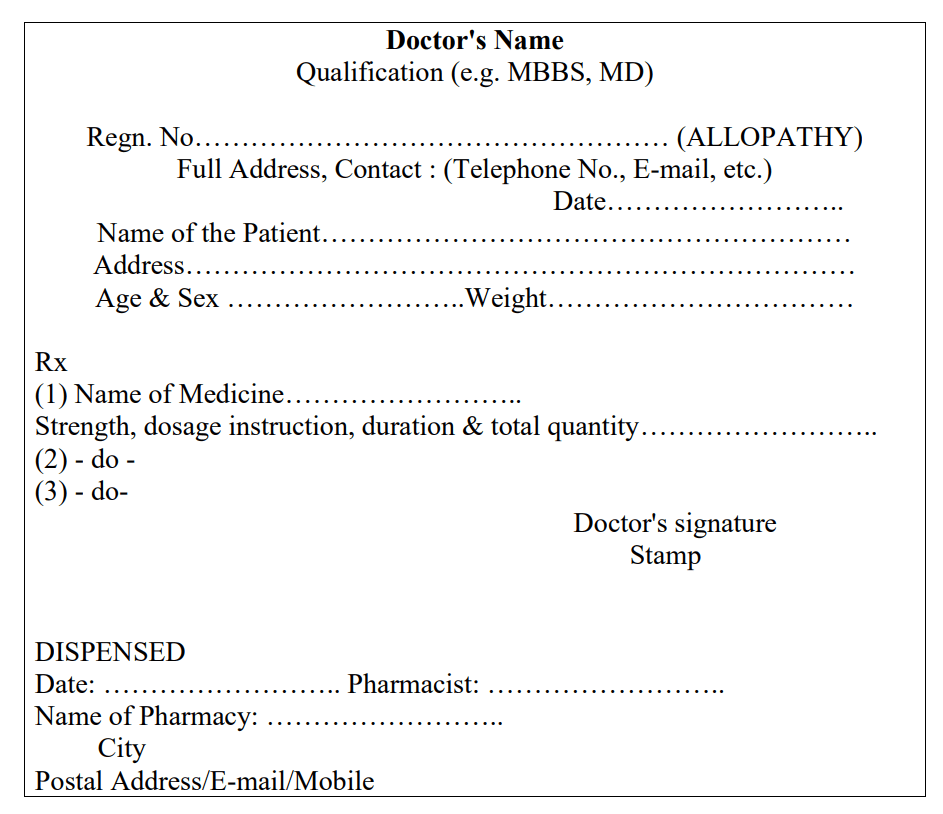What is a Prescription?
Table of Contents
A prescription is a legal document or order written by a qualified health care professional for diagnosis, prevention, or treatment of a specific patient’s disease.
- Is written by a licensed practitioner
- Is written as part of a proper physician-patient relationship
- Is a legal document, “prima facie” evidence in a court of law.
(Note: A prima facie case is a lawsuit that alleges facts adequate to prove the underlying conduct supporting the cause of action and thereby prevail.)
Definition:
Literally, “Recipe” means simply “Take…” and when a medical practitioner writes a prescription beginning with “Rx”, he or she is completing the command.
It is probably originally directed at the pharmacist who needed to take a certain amount of each ingredient to compound the medicine (rather than at the patient who must take/consume” it).

Types of Prescription forms:
- Private prescription form: This type of prescription is generally written on a form that includes the prescriber’s name, address, and qualification. Rx is written to indicate this is a prescription form. This is issued by private prescribers.
- National Health Service (NHS) prescription form: It is only issued for NHS patients i.e. patients suffering from certain diseases and is issued by Government Prescribers.
Parts of the Prescription:
1. Date
2. Patient Information
3. Superscription
4. Inscription
5. Subscription
6. Signa
7. Signature lines, signature, degree, brand name indication
8. Prescriber information
9. DEA (Drug enforcement administration) if required
10. Refills
11. Warnings/label
1. Date:
- All prescriptions expire after one year. In the case of narcotics and other habit-forming drugs, the date prevents the misuse of the drugs by the patient. It helps a pharmacist to know when the medicine was last dispensed if the prescription is brought for dispensing.
2. Patient Information:
- Name
- Address
- Age
- Weight (optional, but useful – especially in pediatrics)
- Time (used only with inpatient medication orders)
3. Superscription:
Represented by symbol Rxe traditional symbol for a prescription which is always written before writing a prescription. This is derived from the Latin word ‘recipe’ which means to take. Instruction is given to the pharmacist as well as the patient to take the medicine as prescribed. Another theory proposed by some scholars is that it drives by the symbol for the god Jupiter. The connection to healing was via prayers that a specific treatment would be effective and the individual would get better.
4. Inscription:
This is the main body of prescription which includes the name and quantity of medicine that are prescribed. This is written in the English language. All medicines are written in separate lines along with the required quantity needed to treat the disease.
What is the pharmacist to take off the shelf?
Drug Name
Dose = Quantity of drug per dose form
Dose Form = The physical entity needed, i.e. tablet, suspension, capsule
Simple versus compound prescriptions
Manufactured versus compounded prescriptions
Clarity of number forms 0.2, 20 not 2.0 (Zeros lead but do not follow!)
5. Subscription:
These are instructions given to the pharmacist for dispensing the number of doses to the patient and how the medicine has to be taken before meal or after the meal.
What is the pharmacist to do with the ingredients?
Quantity to be dispensed (determines the amount in bottle) Dispense # 24.
For controlled substances write in numbers and letters (like a bank cheque)
i.e., 24 (twenty-four)
Any special compounding instructions.
6. Signa, Signatura or Transcription:
Sig – write, or let it be labeled (Latin terms: Signa or signature)
Instructions for the patient
- Route of administration
Oral, nasally, rectally, etc
Take by mouth …, Give, Chew, Swallow whole, etc.
- Number of dosage units per dose
Take one tablet, Give two teaspoonfuls, etc.
- Frequency of dosing
every six hours, once a day …
- Duration of dosing
for seven days, … until gone,…if needed for pain.
- Purpose of medication
for pain, for asthma, for headache, etc.
VERY IMPORTANT to include purpose as this reduces errors!
“As directed by a physician”
- Special instructions (shake well, refrigerate, etc.)
- Warnings
7. Refills or renewal Instruction:
Indicate either no refills or the number of refills you want (do not leave it blank). Determines the maximum duration of therapy.
8. Signature, address, and registration of Prescriber:
This makes the prescription a legal document. A signature, prescriber registration number is necessary especially in the case of habit-forming drugs. The prescriber must write “brand necessary,” “brand medically necessary,” or “DAW” (Dispense As Written) to get non-generics.

Make sure you also check our other amazing Article on : Classification of Dosage Form